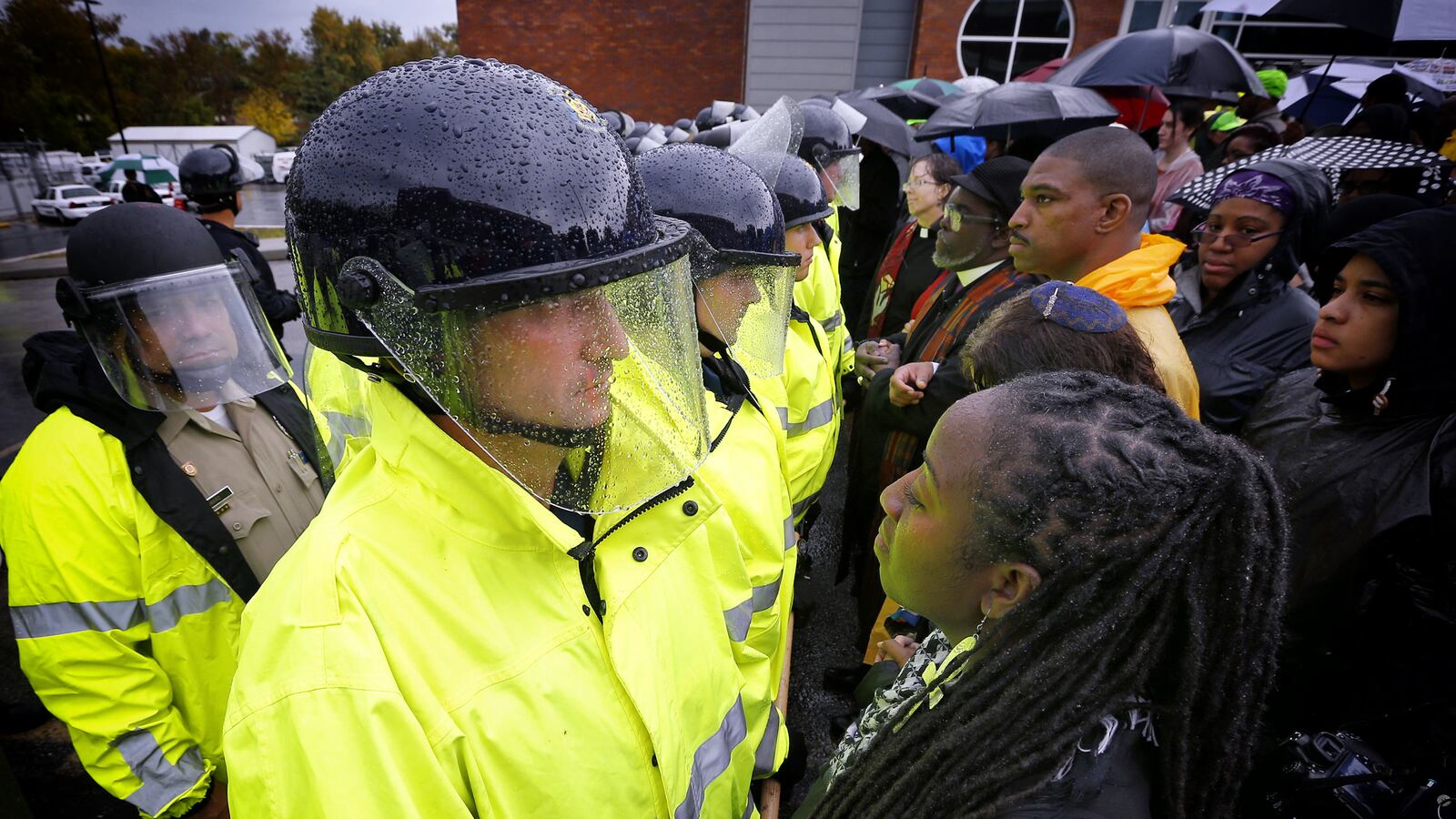The Rev. Carlon Lee, pastor of Flood Christian Church in Ferguson, Mo., was sending out links to a New York Times story Friday night to friends, family and community members who have spent the last two months absorbed in the events surrounding the death of teenager Michael Brown. The story cited forensic evidence offered by federal officials that showed Brown’s blood on officer Darren Wilson’s uniform and gun, which was found to have been fired inside Wilson’s patrol car. Lee’s link came with a personal thought:
“If there has ever been a time to pray, this is it,” he told recipients of texts and emails.
There was really nothing new about the Times’ story—Wilson has maintained since day one that Brown was reaching for the officer’s gun, which led to a struggle ultimately ending in the teenager’s death. Now, though, evidence seen only by a St. Louis County grand jury has been made available for the world, including the residents of Ferguson.
“I believe that when people have received (the Times) article and see what’s going on it will infuriate people and set us back,” Lee said. “No matter what happened in (Wilson’s) car, Michael Brown’s hands were up. No matter if he beat the crap out of Officer Wilson, his hands were up—a universal sign of surrendering.”
All of that may not matter. Police are often given great leeway in determining whether or not to use lethal force, and are rarely indicted for doing so. That Brown may have had his hands up, and that he was shot six times, will likely be minor points for the grand jury weighing evidence that suggests a struggle inside Wilson’s car.
Bradley Rayford, a photojournalist from St. Louis County who has ties with protesters and has been documenting the unrest there, was floored by the news of the leaked evidence when reached Friday night. Still, he didn’t think it would change much on the ground.
“The protesters didn’t believe Officer Wilson’s story in the first place, so they’re not going to believe this story,” Rayford said of the Times’ reporting.
In the immediate aftermath of Brown’s death protesters were first upset that authorities refused to release Wilson’s name. When his identity was revealed, Ferguson Police Chief Tom Jackson also released to the press surveillance photos of Brown allegedly robbing a Ferguson convenience store. The move further enraged protesters and exacerbated relations between the community and law enforcement.
It’s impossible to tell whether the story being sent out by Lee on Friday night would result in increased action on the streets of Ferguson, but one thing, as it has all along, remains clear: If Wilson isn’t indicted chaos will once again reign.
“If there’s a non-indictment I think you’ll see an immediate uproar,” Lee said. “I don’t think people have seen the amount of unrest and anger that will come if there’s a non-indictment.”
If the evidence released Friday is any indication, both are inevitable.






